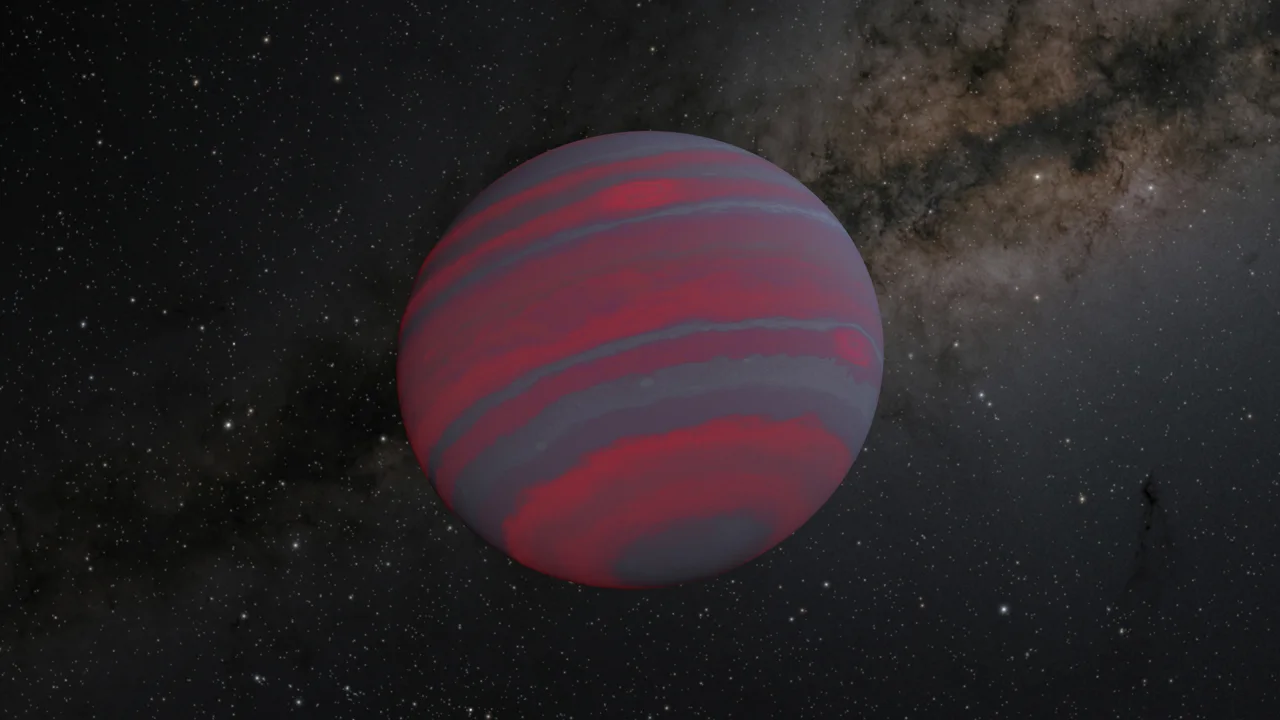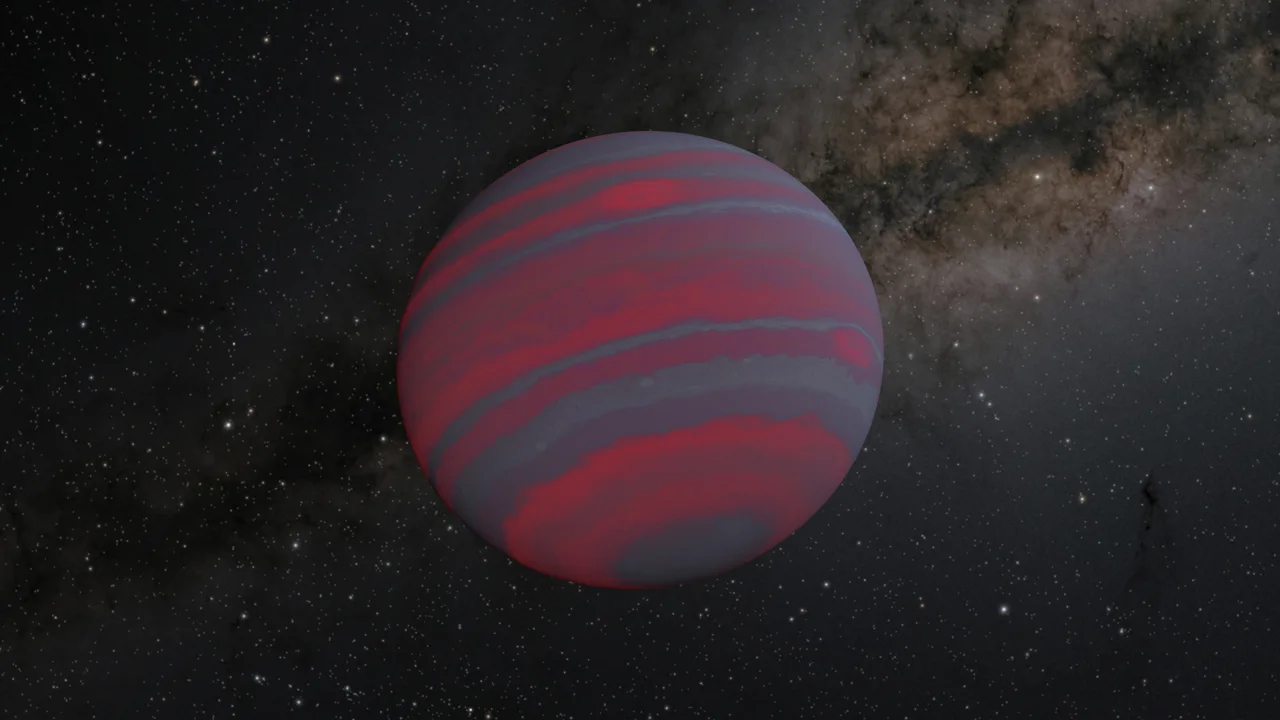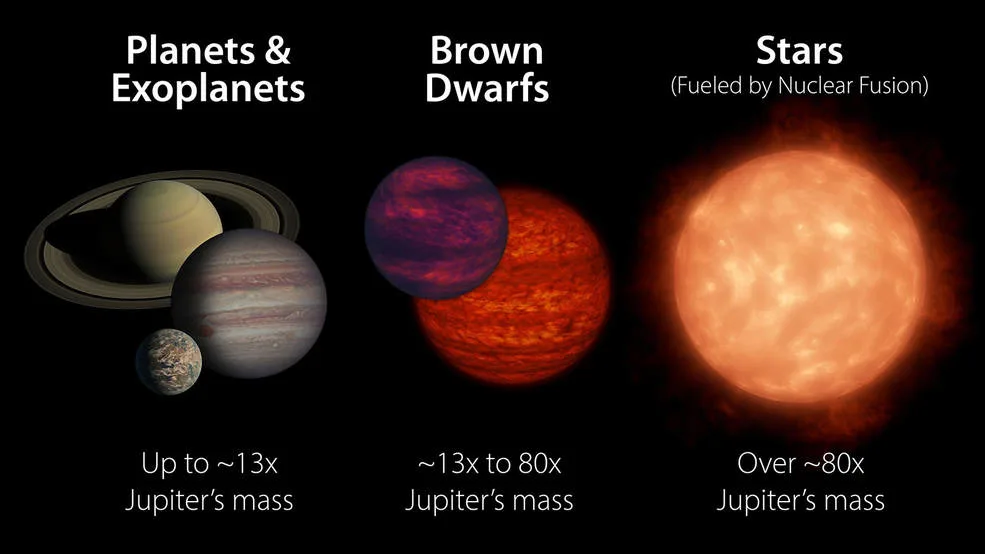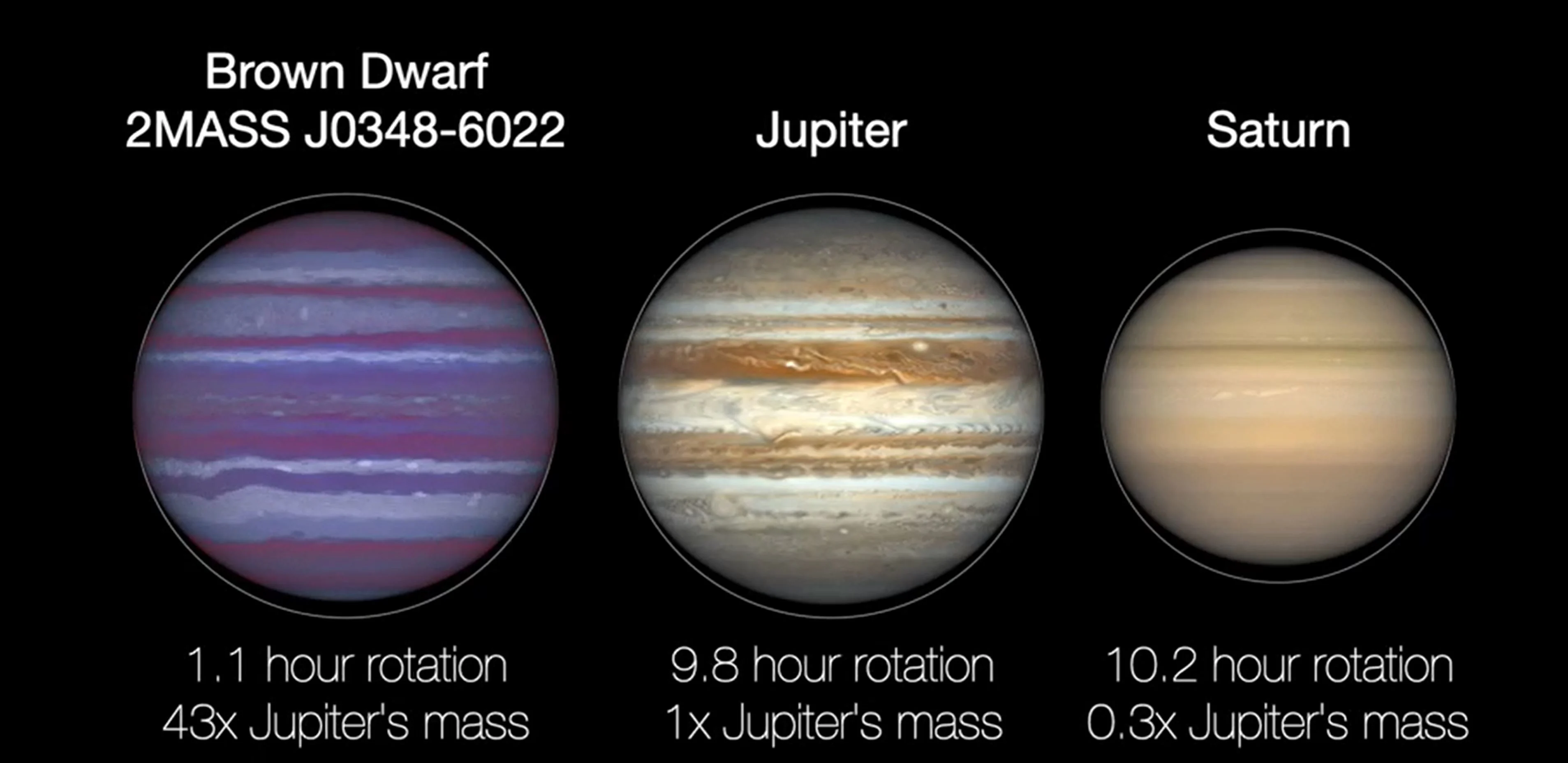
Trio of 'failed stars' may reveal one of the Universe's speed limits
What this Canadian-led study found was far too remarkable to simply be a coincidence.
New research led by a Western University astronomer may have discovered one of the universe's ultimate speed limits. Three brown dwarfs were found to be the fastest-rotating of any ever seen, and they could be rotating so fast they are on the verge of tearing themselves apart.
Among the largest planets and the smallest stars in the universe, there is a type of object out in space that rides the line between the two. Far too massive to simply be considered planets, but not massive enough to ignite stellar fusion, these objects are called brown dwarfs.

This illustration shows a brown dwarf on its own in the depths of space. As these objects emit their heat into the universe, astronomers can find them using infrared observatories such as NASA's Spitzer Space Telescope. Credit: NASA/JPL-Caltech/Robert Hurt (IPAC/Caltech)
Since the first brown dwarfs were discovered in the 1980s and 1990s, astronomers have learned quite a lot about them. Similar to Jupiter and Saturn, they are made mostly of hydrogen and helium. They tend to be roughly the same physical size as Jupiter, however, they pack anywhere from 13 to 80 times Jupiter's mass into that same space. While very hot as they form, once a brown dwarf fails to achieve fusion, it cools off as it ages. They also spin faster as they grow older.
We know this because astronomers have spotted cloud bands, similar to Jupiter's, swirling in brown dwarf atmospheres, which were then used to track how fast they rotate. So far, they've found ones that take anywhere from tens of hours, down to less than two hours, to revolve around their axis. For comparison, Jupiter takes nearly 10 hours to make one revolution.

A comparison between gas giant planets, brown dwarfs and stars. Credit: NASA/JPL-Caltech
In a new study led by Western University Ph.D. candidate Megan Tannock, observations of three brown dwarfs using NASA's Spitzer Space Telescope revealed a remarkable discovery. These three were found to complete one revolution in just over one hour. That's faster than any other known brown dwarf, and according to NASA, for the largest of the three, that translates to a rotational speed of 100 kilometres per second or 360,000 kilometres per hour!
The unusual part of this discovery is that besides their rotation period, these three brown dwarfs are very different from one another. They have different masses, weighing in at between 40 and 70 Jupiter masses each. Most notably, they have different temperatures and thus have different ages.
So, Tannock and her team believe there must be more to this common rotation speed than mere coincidence. Instead, it might be that if a brown dwarf spins faster than this, it may end up destroying itself.
"We seem to have come across a speed limit on the rotation of brown dwarfs," Tannock said in a Western University news release. "Despite extensive searches, from our own team and others, no brown dwarfs have been found to rotate any faster. In fact, any faster spins may lead to the brown dwarf tearing itself apart."

This illustration compares the rotation speed, mass, and rotational 'flattening' of brown dwarf 2MASS J0348-6022, Jupiter, and Saturn. Credit: NASA/JPL-Caltech
As planets and brown dwarfs rotate, the forces produced by that rotation cause them to flatten at the poles and bulge at their equator. So, rather than being spherical, they form 'oblate spheroids'. For example, due to their rotation, Earth is 42 kilometres wider at its equator than it is from pole to pole, while Jupiter's equatorial diameter is over 9,200 km wider than its polar diameter.
If one of these objects rotates fast enough, though, the same forces could overcome the pull of its gravity. This would cause material from the brown dwarf to be thrown out into space. Another possibility is that such rapid rotation may cause the interior structure of the brown dwarf to change, which then slows its rotation to this apparent speed limit.
"It would be pretty spectacular to find a brown dwarf rotating so fast it is tossing its atmosphere out into space," Tannock told NASA. "But so far, we haven't found such a thing. I think that must mean that either something is slowing the brown dwarfs down before they hit that extreme or that they can't get that fast in the first place. The result of our paper supports some sort of limit on the rotation rate, but we're not sure of the reason yet."
Although NASA retired Spitzer a little over a year ago, they plan to launch the James Webb Space Telescope in October. This infrared telescope will be the most powerful space observatory yet. Space surveys conducted by the JWST will undoubtedly spot even more brown dwarfs travelling through our galaxy. This will reveal even more about their nature and potentially solving the riddle of this apparent speed limit.










